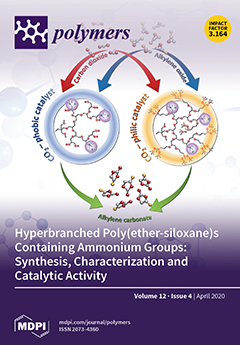One of the most successfully procedures used to increase the production of
t-resveratrol in
Vitis vinifera suspension-cultured cells is the application of cyclodextrins (CDs) and methyl jasmonate (MJ) as elicitors. In particular, β-CDs are characterized by their chemical structure which makes them
[...] Read more.
One of the most successfully procedures used to increase the production of
t-resveratrol in
Vitis vinifera suspension-cultured cells is the application of cyclodextrins (CDs) and methyl jasmonate (MJ) as elicitors. In particular, β-CDs are characterized by their chemical structure which makes them special, not only by acting as elicitors, but also because they are compounds capable of trapping high added-value hydrophobic molecules such as
t-resveratrol. However, the use of β-CDs as elicitors increases the production costs of this compound, making their industrial exploitation economically unfeasible. Therefore, the development of β-CDs recovery strategies is necessary to provide a viable solution to their industrial use. In this work, carboxymethylated and hydroxypropylated β-CDs have been used to form polymers using epichlorohydrin (EPI) as a cross-linking agent. The polymers were coated to Fe
3O
4 nanoparticles and were jointly used with MJ to elicit
V. vinifera suspension-cultured cells. Once elicitation experiments were finished, a magnet easily allowed the recovery of polymers, and
t-resveratrol was extracted from them by using ethyl acetate. The results indicated that the production of
t-resveratrol in the presence of free carboxymethyl-β-CDs was much lower than that found in the presence of carboxymethyl-β-cyclodextrins-EPI polymer coated magnetic nanoparticles. In addition, the maximal levels of
t-resveratrol were found at 168 h of elicitation in the presence of 15 g/L hydroxypropyl-β-CDs polymer coated magnetic nanoparticles and MJ, and non-
t-resveratrol was found in the extracellular medium, indicating that all the
t-resveratrol produced by the cells and secreted into the culture medium was trapped by the polymer and extracted from it. This work also showed that polymers can be regenerated and reused during three cycles of continuous elicitation since the induction and adsorption capacity of hydroxypropyl-β-CDs polymer-coated magnetic nanoparticles after these cycles of elicitation remained high, allowing high concentrations of
t-resveratrol to be obtained.
Full article






